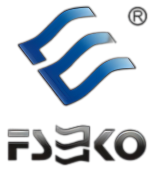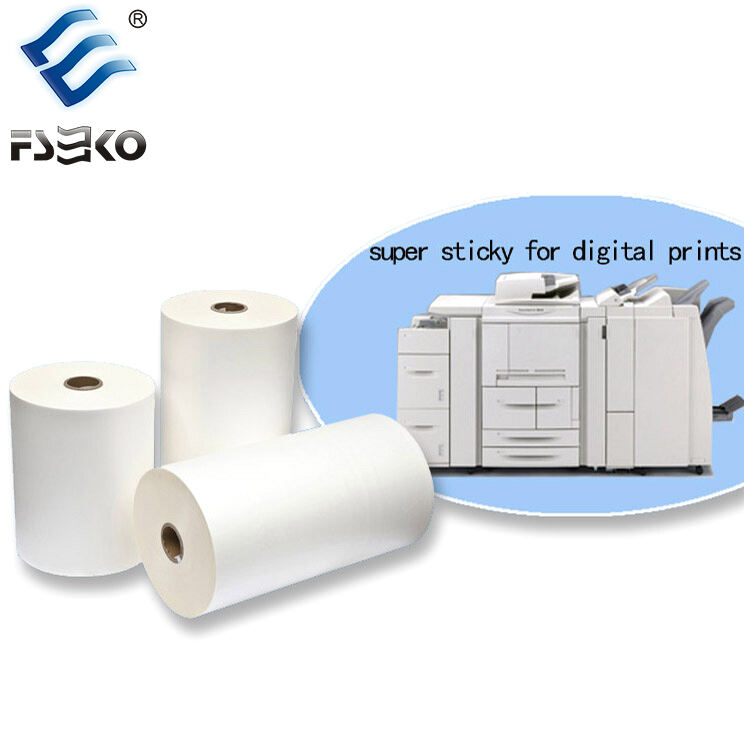PET Metalized Film vs. Hot Sleeking Foil: Structural Composition
While at the molecular level the difference between PET metalized film and hot sleek foil are obvious. METALIZED(polyester) Metalized film is PET base film with micrometre thick aluminum deposited by evaporation with that can give PET film a metallic finish and reflects light but with a flexible property too. Hot sleek foil, on the other hand, depends on laminated aluminum foil that has been adhered to a polymer substrate with heat and pressure to create a much thicker, stiffer overall structure.
Vapor Deposition vs. Thermal Lamination Processes
In vapor deposition, aluminum atoms are laid down onto PET film within a high-vacuum chamber, forming a barrier coat of less than 0.05 microns in thickness. This technique preserves 99% of the substrate flexibility, and can block as much as 99.5% of light transmission. Thermal lamination, on the other hand, laminates pre-made aluminum foil (usually 6–20 micrometers thick) with other materials, such as polymers like polyethylene, with an adhesive.
Key structural outcomes:
- Material Efficiency: Vapor deposition uses 99% less aluminum than hot sleek foil laminates (Material Efficiency Report 2023).
- Layer Integrity: Thermal lamination creates stronger interlayer bonds (12–18 N/15mm peel strength) but increases brittleness.
- Surface Uniformity: Vapor deposition achieves <5nm surface roughness, reducing pinhole defects by 40% compared to laminated foils.
These process differences directly influence performance in moisture resistance, thermal stability, and cost–factors explored in subsequent sections.
Barrier Property Showdown: Oxygen and Moisture Protection
Water Vapor Transmission Rate Comparison
By the virtue of their consistent vapor-deposited aluminum layers, while not as large of a portion succeed in the case of hot sleeking foils, PET metalized films are superior to the hot sleeking foils in moisture barrier effectiveness. ASTM E96 tests indicate that metalized films have water vapor transmission rates of less than 0.5 g/m²/day, whereas hot sleeking foils also register 1.0-2.5 g/m²/day because of micro-gaps in the adhesive layer. This variance is critical in the tropical logistics which experience humidity of over 80% RH, which deteriorate the hygroscopic products (pharmaceuticals, snack foods) quicker and calls for better protection with metalized films.
Oxidation Prevention in Food Packaging
Oxygen-barrier performance dictates shelf life for vulnerable foods such as oils and ready-to-eat meals. (The underlying, pinhole-free aluminum layer is deposited with a thickness in the nanometer range for oxygen barrier sealing.) Seams of hot sleeking foils are susceptible to oxidation since adhesive becomes eroded. An evaluation of novel barrier coatings in 2024 found that vapor-deposited ceramic coatings reduced oxygen transmission rate by 95% compared with uncoated materials, and that rancidity in lipid-rich foods was retarded as a result.
Pharma Industry Shelf Life Case Study
Moisture-sensitive tablets, packed in PET metalized film, were found to be stable for 36 months under accelerated ICH test conditions with reliable WVTR â0.3 g/m2/day. In contrast, batches of hot sleeking foils failed in barrier in 12% of the units in 18 months as a result of adhesive crystallization under temperature. These nonconformances led to 23% increased rejection rates during EU-GMP inspections. The controlled deposition in metalized films delivers consistent barrier protection crucial to the integrity of high value therapeutics such as biologics and vaccines.
Thermal Performance in Industrial Environments
The hot-cold performance of packaging films in hot industrial environments such as automotive manufacturing and electronics assembly is crucial in protecting products from the extreme environments they will be subjected to. Metalized PET film usually maintains better stability under long-term heat conditions than hot sleeking foil as its crystalline polyester substrate and metal surface maintain stability, and are relatively stable under a continuous heat stress. Three thermal properties dominate the selection of barrier materials at or above 100°C: the polymer degradation threshold, dimensional stability during cyclic heating and resiliency of the adhesion when exposed to rapid thermal transients. "These materials go through extensive testing in simulated industrial environments in order to forecast failure in service life.
Heat Seal Strength Under Pressure
Critical to the performance of high-speed packaging lines, the heat-seal integrity is subject to significant stress about the melting point when softening of the material occurs. Seal strength The seal strength of PET metalized film at > 121°C above has 20-25% higher bond than hot sleeking foil and with all over molecular sealing from vapor deposition. This pressure resistance is resistant to seal failures up to and including industrial autoclaving where pressures may vary in excess of 30 psi, while laminated foil materials present higher delamination rates per packaging industry validation protocols (ASTM F88 2023). Reliable seal process leads to less production down time resulting from package integrity recalls in pharmaceutical sterilization application.
Melting Point Comparison Chart Analysis
| Material | Onset Softening Range | Full Melting Range | Industrial Application Ceiling |
|---|---|---|---|
| PET Metalized Film | 150-165°C | 250-260°C | 140°C sustained |
| Hot Sleeking Foil | 85-115°C | 180-220°C | 90°C sustained |
Most of the thermal difference between polyester and foil is in polyester's inherent resistance to molecular deformation vs the "adhesive" nature of foil. PET clarity provides high transparency up to 150°C until molecular chains lose order, and metal deposit increases heat deflection. It’s built with polymeric hot sleeking foil adhesives that start to break down around boiling point, leaving pin holes in their wake at 100-130°C.That gap in performance demands careful matching of application, with metalized films on hand for use in solder reflow operations and foils relegated to low-heat cosmetic filling lines.
Cost-Efficiency Analysis for Packaging Solutions
Raw Material Price Volatility Factors
Price fluctuation is one of the problems faced by PET metalized films since the cost for production is the most influenced by the fluctuating crude oil markets taking into account that petrochemical derivatives form more than 65% of the manufacturing costs (World Bank Commodities report 2023). Aluminum hot-stamping foils are also impacted by low-level mining and refining activities, while the cost of bauxite can change by over 22% annually. Packaging makers need to have flexible sourcing options and build stockpiles to protect themselves against such skyrocketing raw material costs.
Production Speed Impact on Unit Costs
Roll-to-roll metallization of PET films at high speeds – 1,200 meters per minute so far – cuts the per-unit cost by 30% over hot foil stamping’s 400-meter limit. This automated application method reduces material waste to 2.1% compared to traditional foil application waste of 8-12%. This level of efficiency can save €0,013 per packed unit in high-volume runs based on packaging automation benchmarks for 2024.
Total Cost of Ownership Over 5 Years
A comparative analysis of pharmaceutical blister packaging shows:
| Cost Factor | PET Metalized Film | Hot-Stamping Foil |
|---|---|---|
| Material Procurement | $482,000 | $612,000 |
| Equipment Maintenance | $78,000 | $143,000 |
| Energy Consumption | $215,000 | $291,000 |
| 5-Year TCO | $775,000 | $1,046,000 |
The 26% TCO advantage for PET films stems from reduced downtime and energy-efficient deposition technologies, offsetting higher initial equipment investments within 18 months.
Sector-Specific Applications and Performance
Electronics Shielding Requirements
PACKAGING PET metalized film can satisfy applications that require completely metallic ends and optical clarity.New Energy PET metalized film has a good application in the field of critical electromagnetic insulation of electronic products.The aluminum vapor-coated film blocks interference from high frequency electronic devices. Its shielding property of 80dB EMI/RF attenuation is sustainable from the electrically conductive adhesive, which is much more effective than the patchy/rework application of hot sleeking foil. The dimensional stability of the film keeps the barrier from opening and closing during thermal cycling, which occurs when you reflow and cool down PCBs. These attributes are critical for the components used in smart devices where signal integrity drives performance.
Cosmetics Packaging Aesthetic Demands
Hot sleeking foil -- Hot Sleek foil completely overwhelms other packaging of premium cosmetics with its saturated metallic colours and tactile sheens that surpass those of metallization techniques. Such rate enables the fabrication of complex holographic patterns, brushed-metallic effects and brand signature at resolution of â0.2 mm. The gloss levels of more than 95GU are used by premium brands to great effect – high gloss levels trigger immediate shelf impact with a 40% surge in purchase intent over standard films. The decorative flexibility of high end fragrance caps and skincare makes it worth the extra cost.
Industry Certification Compliance Challenges
FDA vs. ISO Standards Implementation
Comparison of certification schemes highlights the disconnect between FDA product-specific requirements and ISO system-wide content. FDA approved means that material is accepted for use for direct food contact and can be used in view of FDA regulations (21 CFR 175.300) requiring third-party validation of chemical migration_limits. ISO 22000:2018 to support a wider approach, requires hazard analysis to be applied whole supply chains: a study in 2023 found 62% of global manufacturers need to put in place six extra procedural controls to meet both standards concurrently.
Localized implementation differences pose additional challenges to ISO adoption and even in Asian and European markets there is variation in the interpretation of packaging requirements, despite standardized guidelines. Companies are about to be hit by an annual cost increment of 22% more for auditing when deciding to do dual compliance instead of performing a single standard operation (Global packaging Consortium 2023). This dichotomy is forcing R&D groups to juggle the FDA’s costly and prescriptive testing protocols against ISO’s adaptive risk management principles, which yields friction in new product development cycles.
FAQ
What is the difference between vapor deposition and thermal lamination?
Vapor deposition lays down aluminum atoms onto PET film in a vacuum chamber, creating a thin barrier while maintaining flexibility. Thermal lamination uses laminated aluminum foil adhered to a polymer substrate with heat and pressure, creating a thicker and stiffer structure.
Why are PET metalized films superior in moisture and oxygen barrier effectiveness?
The vapor deposition process achieves consistent layers with fewer micro-gaps, reducing water vapor and oxygen transmission rates significantly compared to hot sleeking foils.
What are the cost implications of using PET metalized films?
PET films have a lower total cost of ownership over five years due to reduced downtime and energy-efficient processes, despite initial higher equipment costs.
How do PET metalized films perform in high-temperature industrial environments?
PET metalized films maintain stability under heat due to their crystalline polyester substrate and provide better heat-seal strength compared to hot sleeking foils.
What are the certification challenges with PET metalized films?
Meeting both FDA and ISO standards can be challenging due to differing requirements, causing potential cost increases for dual compliance auditing.
Table of Contents
- PET Metalized Film vs. Hot Sleeking Foil: Structural Composition
- Barrier Property Showdown: Oxygen and Moisture Protection
- Thermal Performance in Industrial Environments
- Cost-Efficiency Analysis for Packaging Solutions
- Sector-Specific Applications and Performance
- Industry Certification Compliance Challenges
-
FAQ
- What is the difference between vapor deposition and thermal lamination?
- Why are PET metalized films superior in moisture and oxygen barrier effectiveness?
- What are the cost implications of using PET metalized films?
- How do PET metalized films perform in high-temperature industrial environments?
- What are the certification challenges with PET metalized films?


